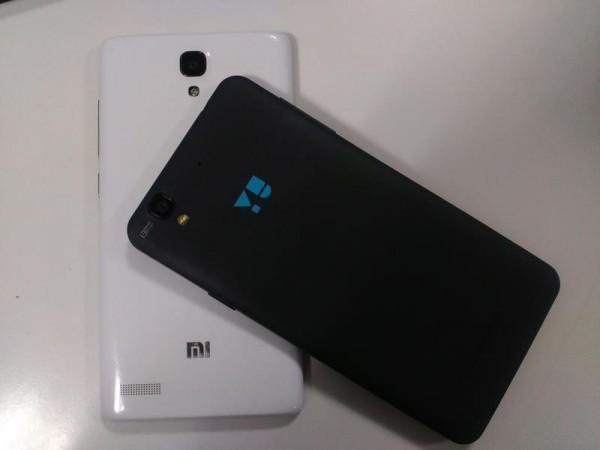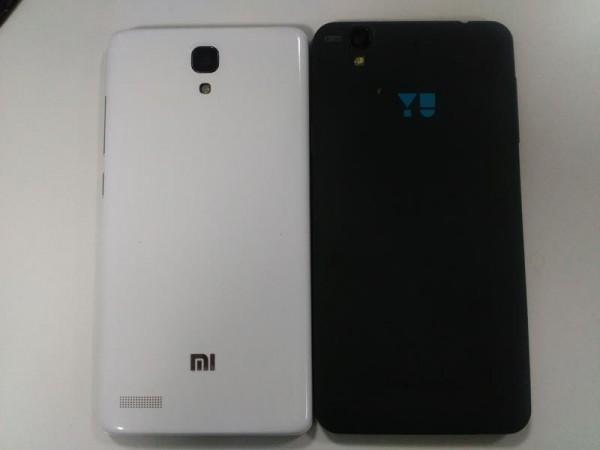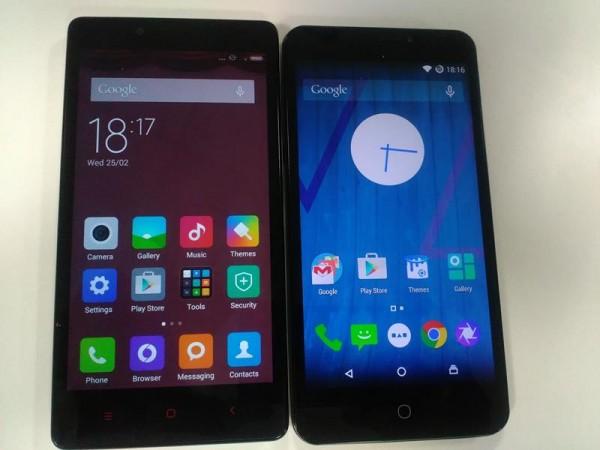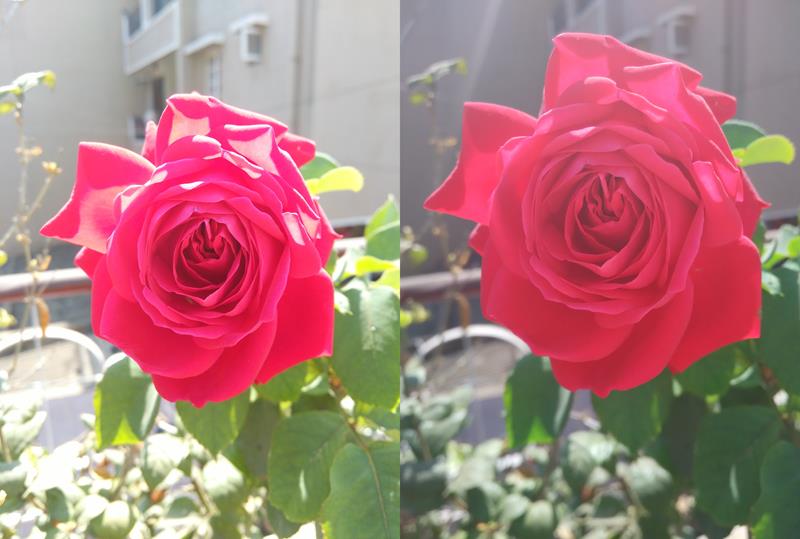
Prospective buyers who are looking for the best under ₹10,000 smartphone have a couple of options to choose from, like Micromax Yu Yureka and Xiaomi Redmi Note 4G.
Responding to market demands, Micormax released its latest device Yu Yureka - a decent all-round smartphone in an affordable price. Yu Yureka has a larger screen, good build quality, and runs on the latest CyanogenMod OS.
One the other hand, Xiaomi Redmi Note has alread garnered positive response for its price-to-specification ratio and the MIUI interface. Although Xiaomi released two versions of the said phone, the superior hardware featuring Redmi Note 3G version is not available in the Indian market.
After using both the handsets, we have ascertained if Yu Yureka can outdo Xiaomi's 4G phablet, and also which phone is best suited for which type of users and tasks:
Design and Build
Yu Yureka measures 154.8 x 78 x 6-8.8 mm and weighs 155g. It has rounded corners and a lightweight build, which means users won't be uncomfotable holding it for a long time while making a call, reading a book or watching a movie.
However, Xiaomi Redmi Note 4G is a bit heavier and measures 154 x 78.7 x 9.5 mm, while weighing 199g. But since the build quality is sturdier than Yureka, Xiaomi Redmi Note 4G seems more durable. The handset has similar rounded corners as Yu Yureka, but due to its thickness it's difficult to fit it inside tight jeans.
But somehow Redmi Note 4G looks better and sturdier in hand. It does not even never look like a sub-₹10,000 smartphone. The matte gray finish of Yu Yureka, on the other hand, does not seem competitive. Thus, this round goes to the Xiaomi phablet.

Winner: Redmi Note 4G
Display
Yu and Xiaomi both have packed a 5.5-inch IPS display with 720x1280 pixels resolution at 267ppi. Although both feature identical screens by specification, they look slightly different when in use. Xiaomi Redmi Note 4G's screen prompts over saturated colours, but in real life the screen looks more jazzy and vibrant.
On the other hand, Yu Yureka screen looks a little muddy with less colour balance. Both the screen has impressive viewing angles, means you can read the screen from different angles.
However, while watching any movie or zooming a high resolution image or reading PDFs, Redmi Note 4G appears to have a definite edge over Yu Yureka. It doesn't have any visible blurring around the edge while viewing text, image or video.
Winner: Xiaomi Redmi Note 4G
Performance
Both phones feature decent specifications; but when compared, Yu Yureka seems better than Redmi Note. A Snapdragon 615 octa-core SoC has been married with 2GB worth RAM and 16GB of internal memory space. On the other hand, Redmi Note 4G features a Snapdragon 400 Quad-Core SoC with same amount or RAM, but only 8GB of in built memory.
Yureka, with a score of 31,578, will definitely outperform Redmi Note, which has been scored 19,479 in Antutu Benchmark 5.6.1. Yu Yureka won even when we put the two handsets through the Quadrant Standard test; in which Yureka achieved 18,037 and Xiaomi Redmi Note 4G 9,513. However, the difference narrowed down while testing with the Vellamo Benchmarking suite. In Vellamo Metal test, Redmi Note 4G scored 887 as compared to Yureka's 946. The Xiaomi handset got 1,151 in multicore test, while Yureka achieved 1,385. Redmi Note acquired 2,007 in Browser benchmarking, where Yureka scored 2,137.
Same happened when the two devices were put through the real life test. As we mentioned earlier, Redmi Note 4G was a little difficult to hold while watching a movie or reading a book at a stretch. But, performance-wise we didn't notice much difference between the two. Browsing, multi tasking, calling and typing documents are easy on both the devices. Xiaomi Redmi Note features both Flesky and ShwiftKey keyboard, so the device can be preferred if the user types for long.
In gaming, Yureka responds well for it's higher specification but the device heats up considerably while playing any graphic heavy games. We didn't experience any such problem in Xiaomi Redmi Note 4G.
Still, given the benchmark scores and for the inclusion of double in built storage, this round goes to Yu Yureka.
Winner: Yu Yureka

Software
Both the devices run on Android Kitkat 4.4.4 overlaid with a custom interface. While Yureka features Cyanogen developed CyanogenMod 11s interface, the Xiaomi Redmi Note 4G features proprietary MIUI interface; both have been developed by veteran Android ROM developers so each features some great level of strength.
With huge personalisation ability, Cyanogenmod is best for those geeky consumers who like total personalisation of the phone. On the other hand, Xiaomi's MIUI is quite a balanced interface. Redmi Note 4G has received the stable MIUI 6.3.5.0(KHMIBL), update which is definitely more intuitive and also looks great. Xiaomi has used the colour palate, fonts, icons, behaviour and interface so precisely that we are compelled to say this is one of the best available Android interfaces till date. Period.
So given the clean and tidy interface, overall smoothness and utility tools, Xiaomi Redmi stands at the top when it comes to software.
Winner: Xiaomi Redmi Note 4G
Camera
Both the devices have similar 13MP rear camera and a 5MP front camera with much required AutoFocus and LED flash. The cameras' focus is accurate and fast enough. In our test, both produced good results and the contest felt closer.
However, comparing both the camera-clicked images of the same object in the same environment, we found that Redmi Note's camera produced more colourful images than Yureka's.
In low light, we found Redmi Note 4G's camera performed a little better due to its slightly bigger sensor size but we found a little misbalanced metering while shooting under florescent light. In comparison, Yureka's camera balanced the colours well in similar environment.
However, comparing both the cameras throughout various conditions we found both the cameras have their own pros and cons. While Redmi Note's images had more colour, it underexposes the images sometimes, and while the Yureka camera controls the metering quite well the resultant image has less colour.
Winner: TIE
Battery:
In this segment, Xiaomi Redmi Note 4G clearly leads the way. Featuring a 3100 mAh battery, Xiaomi Redmi Note 4G lasts almost a day and a half in subtle use, while the power users can easily find their device to last for a day.
On the other hand, Yu Yureka features a 2500 mAh battery which lasts around a day in subtle use and around half a day in power use. In the synthetic battery benchmark, we found Xiaomi Redmi Note 4G to stay around 33% higher than Yureka. Naturally, this round goes to Xiaomi Redmi Note 4G.
Winner: Xiaomi Redmi Note 4G
Price and Availability
While Yu Yureka is only available through flash sales via Amazon every week, Xiaomi Redmi Note 4G is available on Flipkart and Airtel brick as well as mortar stores. Xiaomi has stopped the flash sale process for Redmi Note 4G, so you can buy the handset anytime.
Overall Winner
Both the smartphones boast decent screen, 4G connectivity, build quality, hardware specification and powerful camera. After considering all aspects, we would recommend Yu Yureka to those who are looking for a powerful dual SIM 4G smartphone. Redmi Note 4G is the best smartphone if you are looking for a better looking and easy-to-use smartphone.







![Nothing to open its first global flagship store in THIS Indian city [details] Nothing to open its first global flagship store in THIS Indian city [details]](https://data1.ibtimes.co.in/en/full/827007/nothing-open-its-first-global-flagship-store-this-indian-city-details.png?w=220&h=135&l=50&t=40)



![Nothing to open its first global flagship store in THIS Indian city [details]](https://data1.ibtimes.co.in/en/full/827007/nothing-open-its-first-global-flagship-store-this-indian-city-details.png?w=220&h=135)

